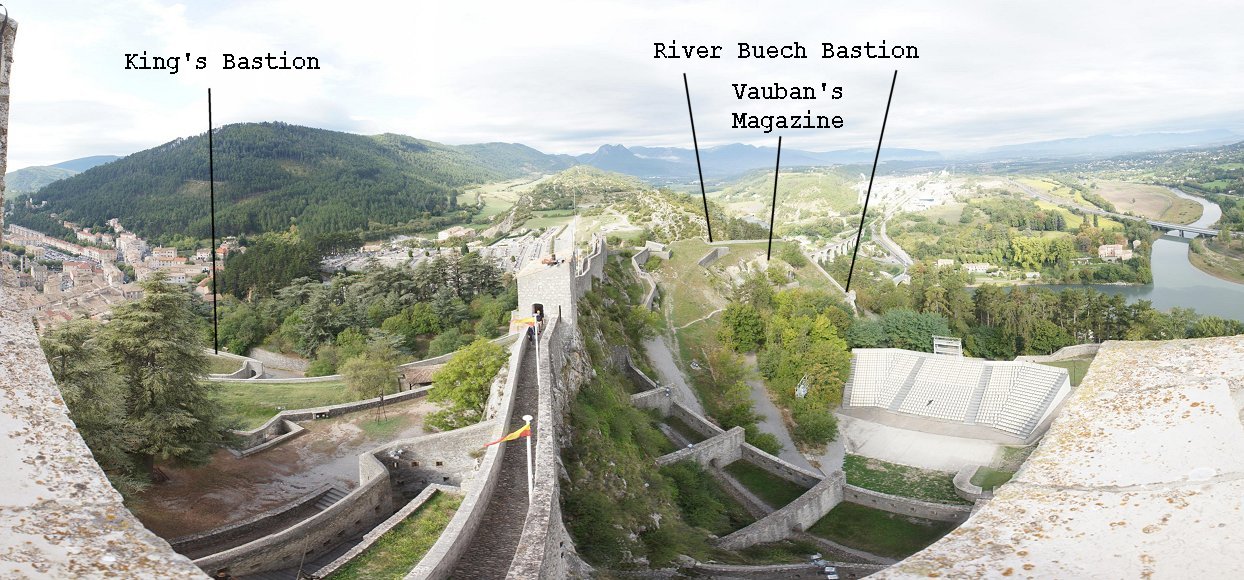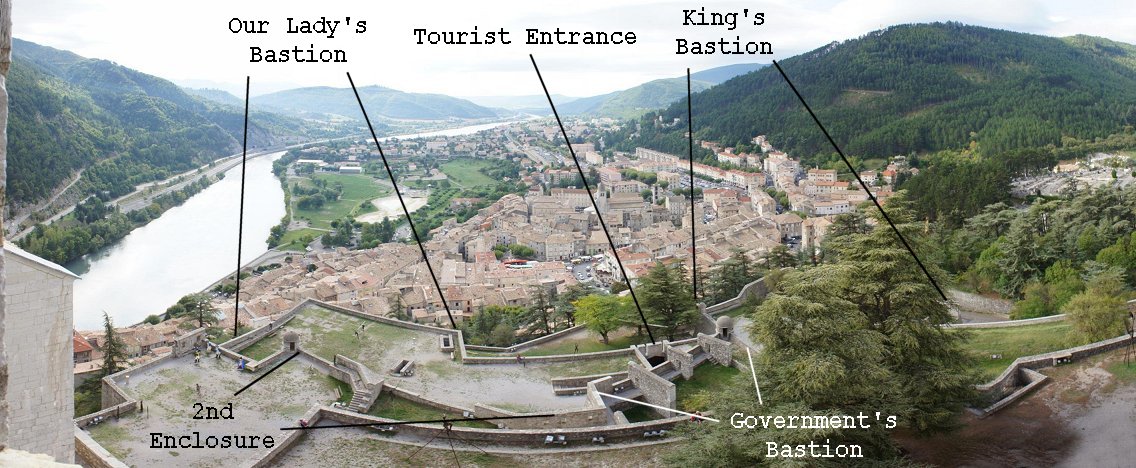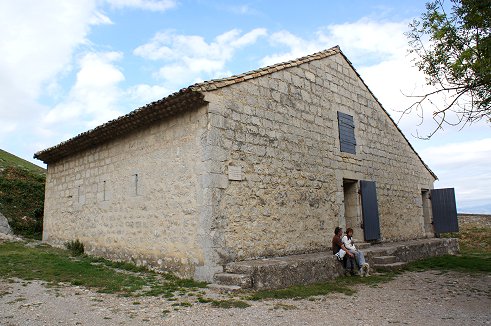
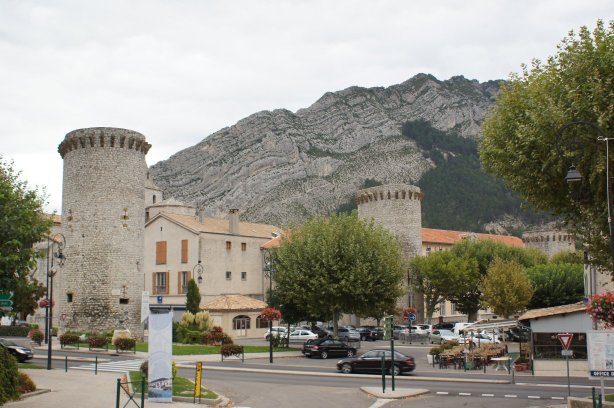
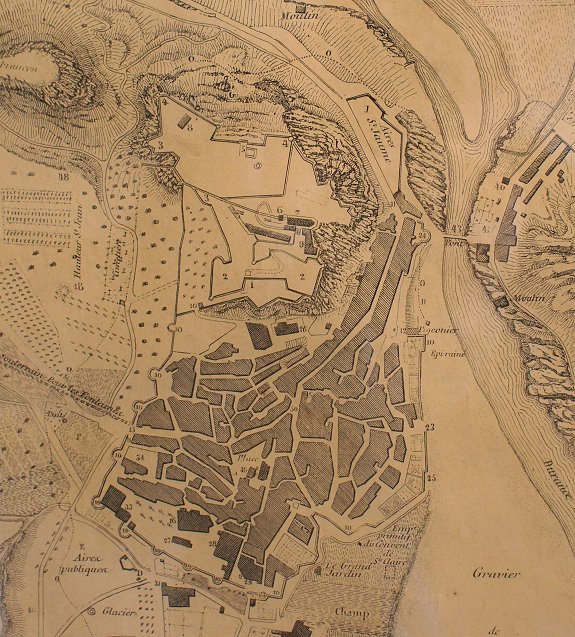
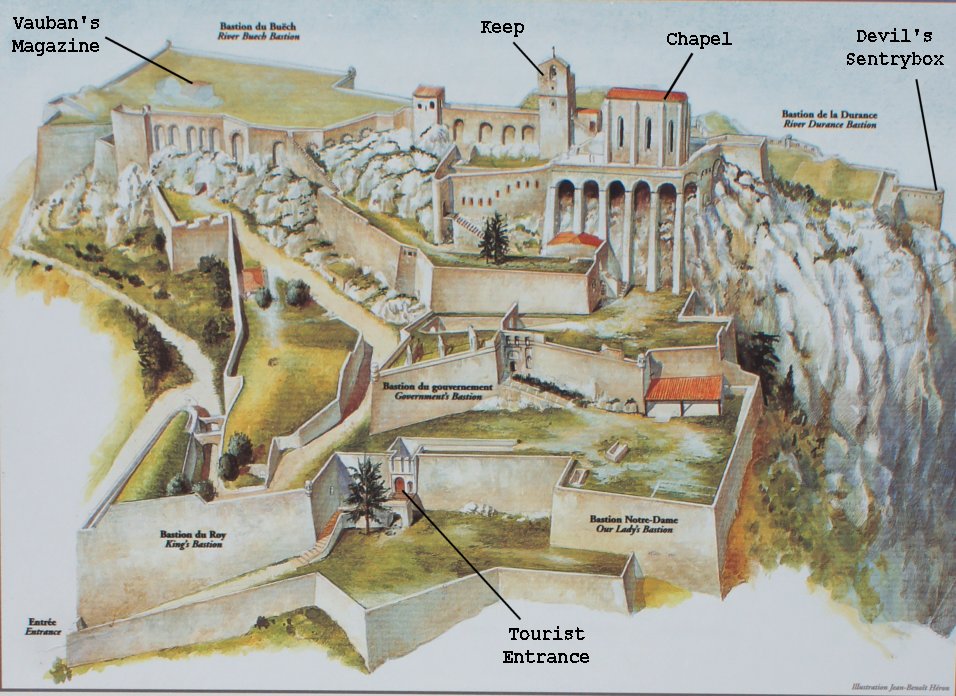


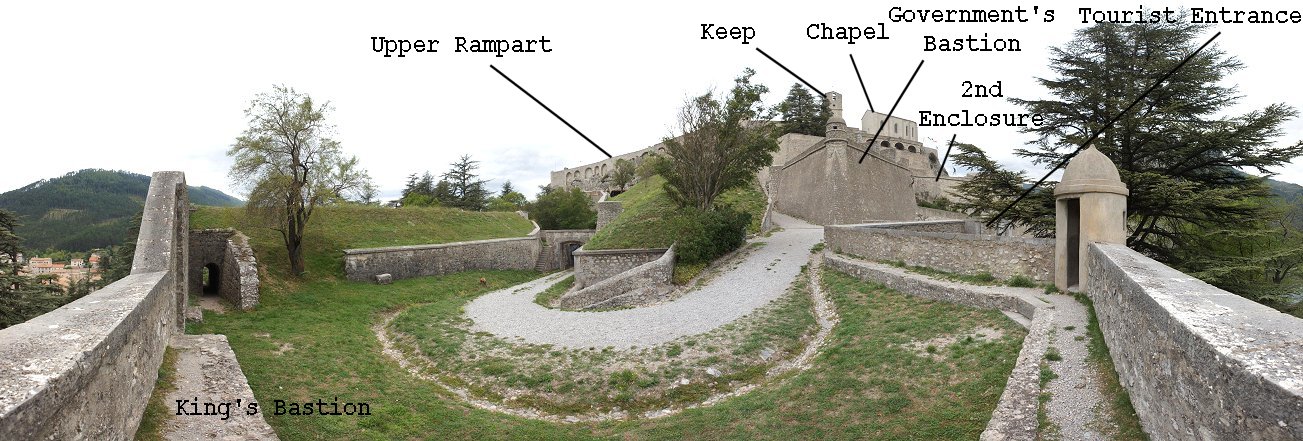


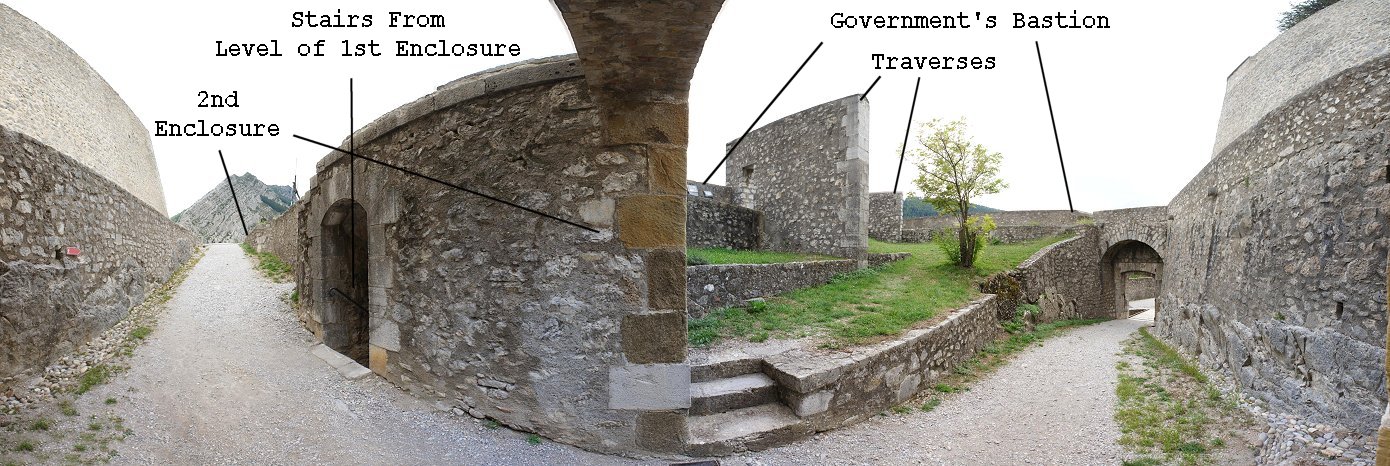


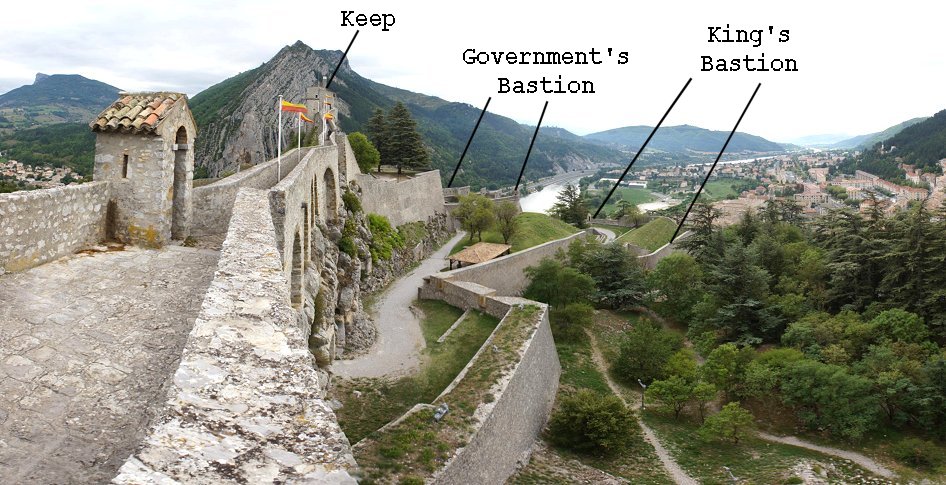

| From the other side of the Upper Rampart you can see the two bastions facing into Dauphine as well as traverses, 19th century additions, and Vauban's Magazine. Vauban's Magazine is unusual in that it is built on two levels. The door at far right leads to steps descending to a lower level of the magazine. |  |
